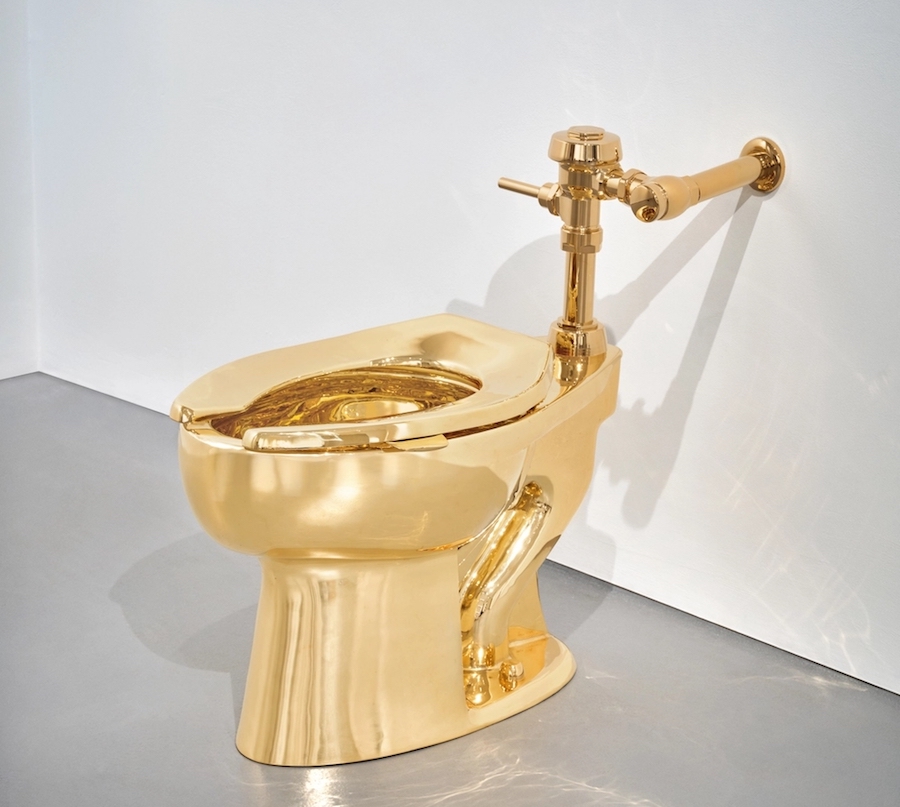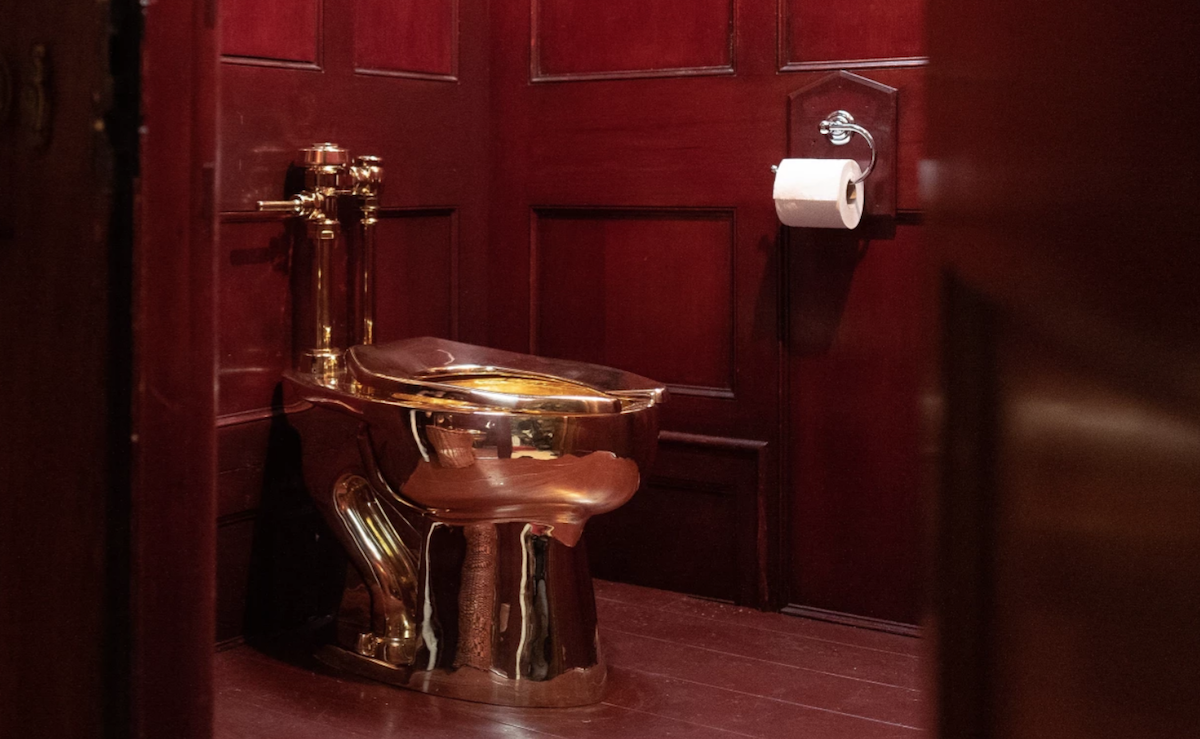When Maurizio Cattelan unveiled America in 2016—a fully functioning toilet cast from more than 100 kilograms of 18-karat gold—it was never meant to be subtle. The work glowed with provocation, a mirror to both excess and aspiration. This November, the infamous sculpture returns to public view, this time not in a museum restroom but under the glare of the auction room. Sotheby’s will offer America in its Now and Contemporary Evening Sale on 18 November, setting the opening bid at the literal value of its weight in gold. The figure will fluctuate with the market until the hammer falls—a fittingly volatile tribute to a work that has always tested the limits of what art, value, and irony can bear.
Billionaire Steve Cohen is reported to have purchased the 18-karat, fully operative sculpture by Cattelan in 2017. It’s now coming up for sale at Sotheby’s.
Cattelan has made a career out of pointing at the absurdities of power and money with an expression somewhere between a smirk and a shrug. America does this with surgical precision. Its joke is cynical but straightforward: here is a sculpture whose market price is inseparable from its material worth. For centuries, critics have questioned whether art is “worth” what it costs. Cattelan turns that anxiety into form. The result is both an answer and a taunt—a literal throne made of capital.
When the work was first installed at the Guggenheim Museum in New York, the public was invited to use it as they would any other toilet. Over 100,000 visitors queued for the experience, encouraged by the museum’s deadpan promise of “unprecedented intimacy with a work of art.” It was democratic and ridiculous in equal measure, a reminder that the rituals of the museum are not so different from those of the marketplace or the bathroom.

Then came Blenheim Palace. In 2019, while on loan to the birthplace of Winston Churchill, the piece was stolen in a midnight raid that left police and insurers chasing leads and the art world shaking its head in disbelief. The stolen version has never been recovered. The edition heading to auction is now the only existing example—one more twist in a story that was already somewhere between performance, satire, and myth.
When America is installed again this autumn, it will occupy a bathroom in Sotheby’s new headquarters in the Breuer Building, the former Whitney Museum on Madison Avenue. The symbolism is hard to miss. What began as a critique of institutional authority now returns inside one of the art world’s most powerful institutions, its gold surface reflecting the faces of bidders who may well pay millions to claim it. At current prices, that starting bid hovers around $10 million, but the final number will depend on what gold itself is worth that night—a poetic alignment of commodity and concept.
In its making, America sits in conversation with both Brancusi’s polished bronzes and Jeff Koons’s hyper-reflective inflatables, though its reference point is clear: Marcel Duchamp’s 1917 Fountain. Where Duchamp stripped a urinal of its function and declared it art, Cattelan restores that function, giving Duchamp’s provocation back its plumbing. He collapses the pedestal, blurring the line between art and object, idea and excrement, with extraordinary craftsmanship and unnerving humour.
Lucius Elliott, Sotheby’s head of Contemporary Marquee Sales, called America “a conceptual checkmate.” He’s not wrong. In a period obsessed with art’s market value and its moral worth, Cattelan has produced something that refuses to separate the two. The piece mocks privilege while embodying it; it is both satire and trophy. Viewers can recoil or laugh, but either way, the reflection in the gold remains their own.
Top Photo: Maurizio Cattelan America Photo Courtesy Sotheby’s

